Hey, Who Really Cares?
thoughts and experiences working on a cover of Linda Perhacs' wonderful song
discovery
i remember exactly where i was in 2022 when i first heard Hey, Who Really Cares from the album Parallelograms by Linda Perhacs. like most simple magic, the circumstances leading to it’s discovery were not particularly remarkable. i was in my studio late at night listening to music on my monitors. i believe it was just something the algorithm had grossly expunged into my “discover weekly” trough. at the time, the machine deemed it to be the feed i need. i am quite lucky that it was right
the song captured me quickly, and i remember restarting it less than a minute in to get a closer listen. two classical guitars weave together into a soft bed for the other instruments. they’re so soft that they become unremarkable- white noise even- by the halfway point of the track. the drums too remain sparse; they are practically nonexistent, but not at all unimportant, remaining hidden until a perfectly placed high hat roll jumps out to the top of the mix. her vocals are presented bare, with no overdubs and little reverb. they are unbelievably clear and visceral. there’s also a bass and a shimmery synth melody that supports her vocals throughout the choruses. the bass line serves as a harmonic layer to her voice, and as i began to learn the song i quickly came to realize that it was in fact a duet. it wasn’t until i began learning this bass line note by note that i found it never repeats, and is instead a continuous and strung out melody that builds in intensity through the songs 2:36 runtime. focusing on it exclusively is still mesmerizing to me
the way all of the instrumentalists performed their parts is an exorcise of subtle mastery. it isn’t over the top, particularly complicated, or flashy. to many it may not appear to even be impressive. but it is precisely delicate, painstakingly fine tuned, and lovingly gentle. had i heard the song through my cell phone speaker, i may not have noticed the degree of care that was taken in mixing it. there’s a lot to be said about music consumption and to what degree our set and setting play a role in our experience of listening/experiencing. in this case i got very lucky to find the song in the right space physically (convex), and later i found out that i would circle it over and over again inside myself until i knew it there, too (concave)
recording (1)
i started to learn the song on the same night, and even found some chords online, published by tab author DiddyD (bless you!!). despite my very real gratitude towards this tab writer, their work was far from perfect. even if it was exact, the songs fingerpicking pattern is quite complex and distinguishing between the overlapping guitars was an impossible task for my average at best ears. instead i made a few variations to the chord progression, swapping out some of the bridge chords for ones i felt fit the mood of the song better. once i was happy enough, i moved on to the bass line and as stated earlier, discovered it was incredibly intricate. because it shifts and changes through the song, i had to piece it together section by section in a way that, looking back, reminds me of quilting or some sort of patch work (see the section Beaded Prayers Project below… or just keep reading)
at this point i had to reckon with something i had known since i set off; i could never sing like Linda could sing. i don’t mean that in a self defeating or whiny way. it’s simple truth. she was miraculously gifted vocally, and her voice became a primary reason that this song even was made in the first place (more on that soon). on top of her raw ability, it was incredibly well recorded. i couldn’t dream of coming close to that quality in my home studio
having limitations in any art making practice could be a great weight on you, or it could be part of the dance. at each turn, i tried to be very aware of what i wouldn’t be able to get quite right. these areas of inadequacy could instead be seen as open territory, places for me to inject some of my sound and style, and a chance to make it mine. i think in some way, this is how a cover can be “good”. you take this fully formed idea, and cut out of it and patch on your own ideas, your own feelings, or soul. you join the artists voice in harmony, attempting to reinforce and extrapolate on what you think they wanted to get across in their work. it’s both an act of reverence and collaboration. and sure, maybe that’s just a cope for not being able to get it quite right. hey, who really cares?
origins (1)
after forming these ideas and listening to her song over and over, i laid in bed that night and looked up her name on youtube. i was very happy to find an interview that featured her origin story. working as a dental hygienist, she was struck by luck when music producer Leonard Rosenman was having his teeth cleaned and asked her what she does in her spare time. if i remember right, she showed him a song, and he excitedly asked if she had more. he ended up introducing her to a wide array of music at his house sometime soon after to expand her repertoire. over a spaghetti dinner, him and his wife poured 8 hours of music into her. during her ride home, with her head full of sounds and ideas, she looked into the sky and saw above her a language of colors, each one communicating a different frequency. she pulled her car off to the side of the road, and scribbled them into her notebook.
soon after she returned to Rosenman and told him of her experience, sharing her idea to create a song that could be heard from a variety of angles. he was so excited by the idea that he told her he wanted to record a whole album just to do that one song; they would have to sneak it past the studio executives by hiding it amongst her more formulaic tunes. they recorded Parallelograms together, and after spending so much time getting everything just right, she received the record labels versions of the masters to find her work drained its soul. they had squished the highs and lows. it wasn’t all there. she threw that pressing in the trash after hearing it once, never listening to it again. the album released to no success, and Linda quit music for the next 40 years, returning to her work as a dental hygienist
recording (2)
over the next couple days, i kept working on the song. i did my best to find a synth tone that felt similar enough to the one used in the original, and i added a distorted and filtered electric guitar layer to supplement the classical guitar i had started with. as for the vocals, i just tried my best. it took a few attempts until i got something that felt close enough to the original without it being blasphemous or sounding like mockery. feeling like the song had a little too much empty space, i added one more synthesizer that droned in the background throughout the whole song. i used the last section to go into sonic territory i was more familiar with, breaking away from the original and filling it with my own melodies on the moog matriarch and bass. i love how her version fades out in the midst of the ending jam, but i made mine a bit longer. i love that last chord progression, and how it feels tense and brooding. i worked with my close friend James to clean things up between then and now, but they were fairly minor
i was happy with it, and it was done. but i have never been good at releasing my art. it often is made because of a compulsion, and the compulsion to show it to the rest of the world is much rarer. so it sat on my computer for about two years and collected digital dust. however, the song and most importantly the words of the song, did not
“i used to think of ferris wheel light sounds
the friday hum of neons and blue
but now they’re like circular cages
of grated tin and rusted wind”
this is my favorite of the lyrics. i love that it is disjunct and overly poetic. i love how the words leave her as though if they were said any louder, they may hurt her. of course, i love their subject matter, too. i’ve found myself grasping at those same light sounds, felt the allure of neons and blue, and have become entrapped by the circular cages that they reveal themselves to be, walking their perimeters ceaselessly
looking back at the years since i made this cover, i notice how much it fermented in me. it’s like it was cabbage in my crock, and i had to add more vinegar (experience) to get it to turn into kimchi (something I can digest or understand). i will keep it light here and just say that i found the vinegar. its been a tough time- i have been “living the questions” as Rilke puts it. throughout it though, her words have comforted me often and sometimes provided a way for me to see through the dark
beaded prayers project
looking back, i can’t help but compare the process of reproducing her work to the Beaded Prayers Project. a 30 year ongoing community based art project by artist Sonya Clark. participants are asked to write a prayer on a small piece of paper, then enclose it in fabric and sew it shut using at least one bead. ideally, each participant makes two beaded prayers. one goes home with them, and the other stays with the venue, holding the potential to become part of the traveling exhibition of prayers
over the last few months, i was lucky enough to be a part of this project as both a participant and a host. i remember how desperately i scribbled down my first prayers, asking the unseen flow to bless me with love and to give me peace of mind and ease. i wanted that very desperately. i imagine that many of the beaded prayers contain similar wants. chances are such that it eventually became a part of the whole- it was fastened to one of these boards shown above, and will likely travel the world for years to come. the prayer inside that fabric will never be seen by other eyes, but it is joined by a chorus of other voices- human voices that share so much in common with another
something about spending time around the prayers changed how i look at the life cycle of artwork. Perhacs’ song became like one of these prayers to me, and in many ways covering it felt like a way to take it deeper inside myself and hold it closer to my core. i wrote my note, and i meant it. now that i have honored that, it’s my turn to fasten it onto the great wall. maybe putting your art out is a separate project all together
origins (2)
despite the circumstances of it’s release, Parallelograms rolled through many hands and into many ears over the 40 years that Perhacs had distanced herself from music. one of those sets of hands and ears was Michael Piper, who owned a CD company in Brooklyn. he reached out to Linda, sending her a copy of her album and telling her how his listeners loved her music. he wanted to meet up, and she agreed. upon his arrival he told her how much people loved her songs, and she told him how she wished people were hearing the original sound she had worked so hard to achieve- he had been reproducing the studio masters that she hated. it turned out that she still had a roll of tape with the original masters tucked away inside her bedroom. Michael was able to repair the 8-track, and together they put out the real sound. it was passed around the internet excitedly, and became an underground cult-classic. since then, it’s been covered and sampled and shown so much love. it’s lovely to know that she’s back to making music these past few years
end
this song taught me very much. had it not been for beaded prayers helping me understand the ways that art and community function together, it may still be a unfinished scrap on my laptop. i feel like now is as good of a time for me to share my work as any other. i am very grateful to have found Perhacs’ work when i did. i am very grateful to share it with you, too. especially after these past couple years of vinegar. perhaps this song can be like a beaded prayer- an open invitation to create and share, a desire accepted and made into something ornate, or a harmonious cry into the pregnant void
take care :)

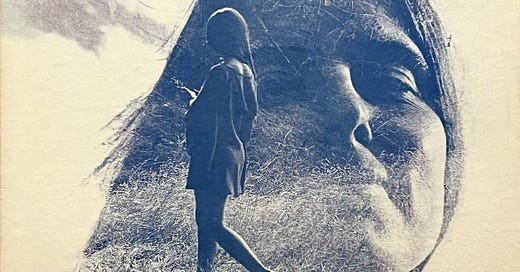



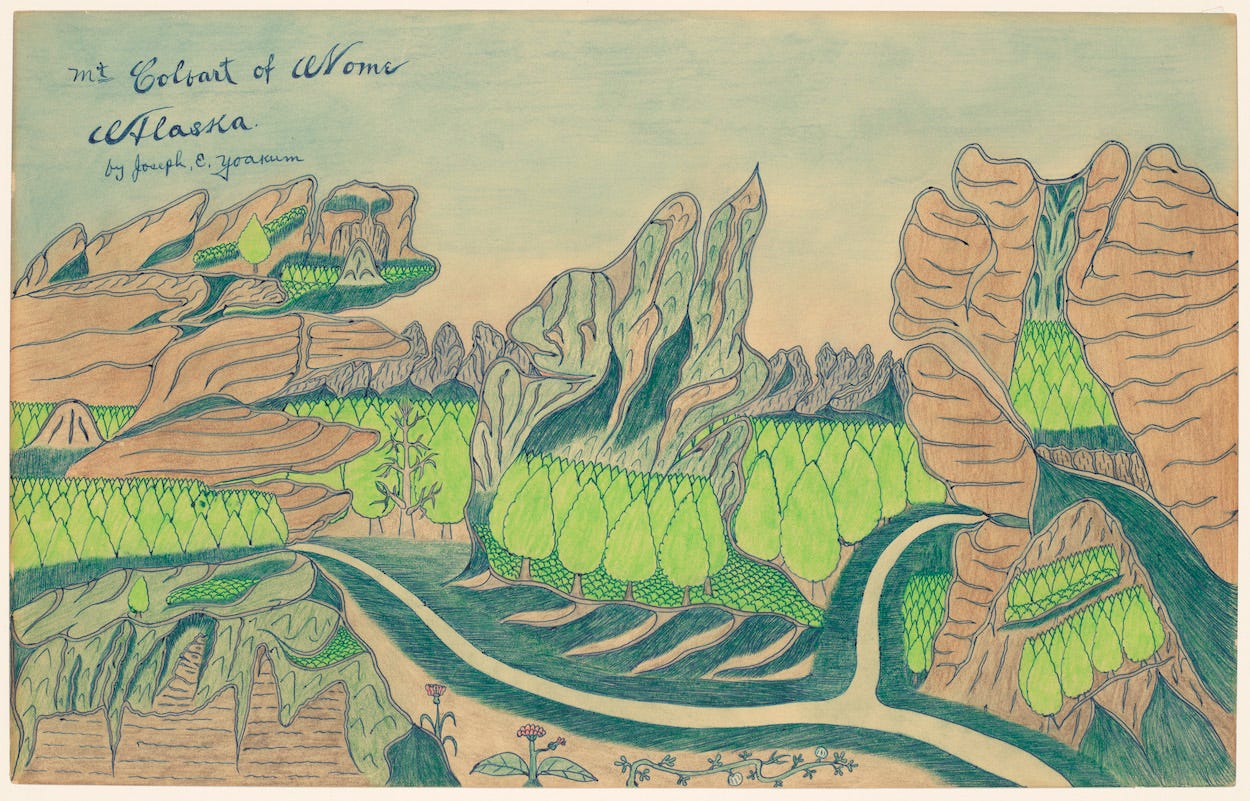


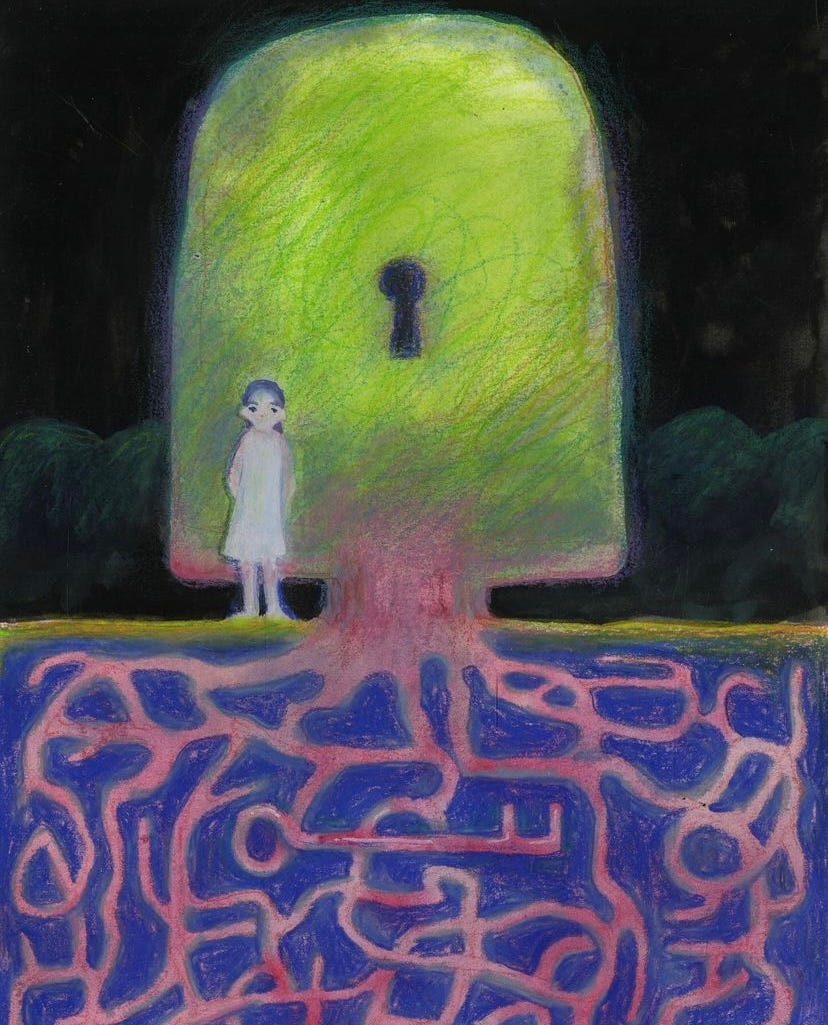
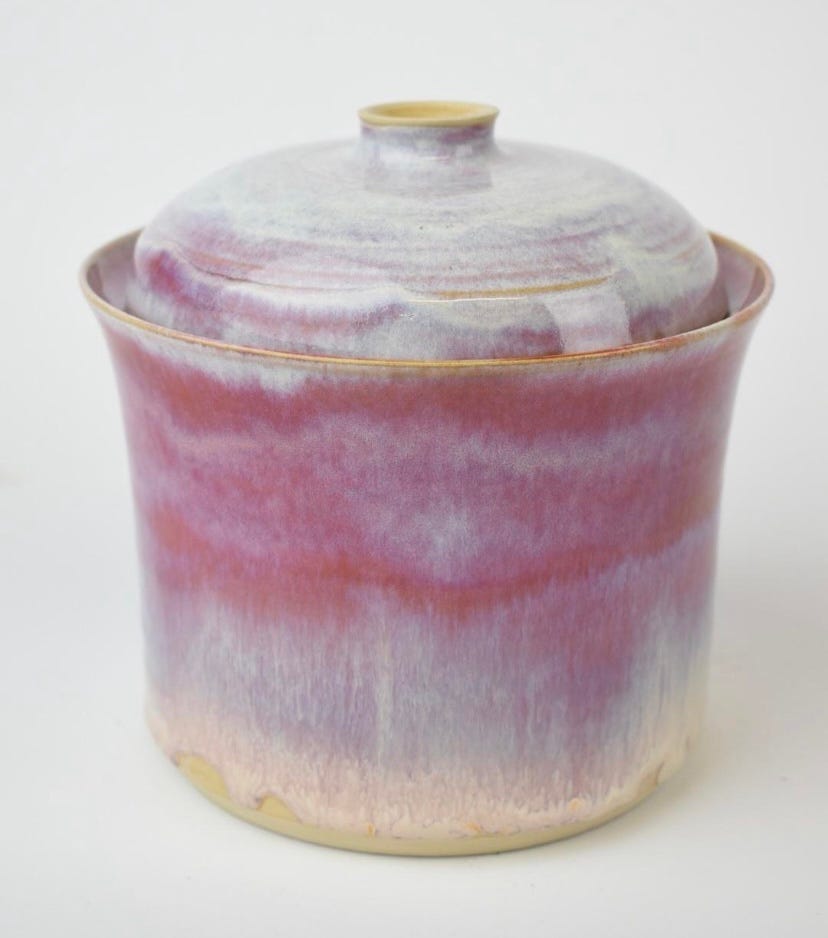

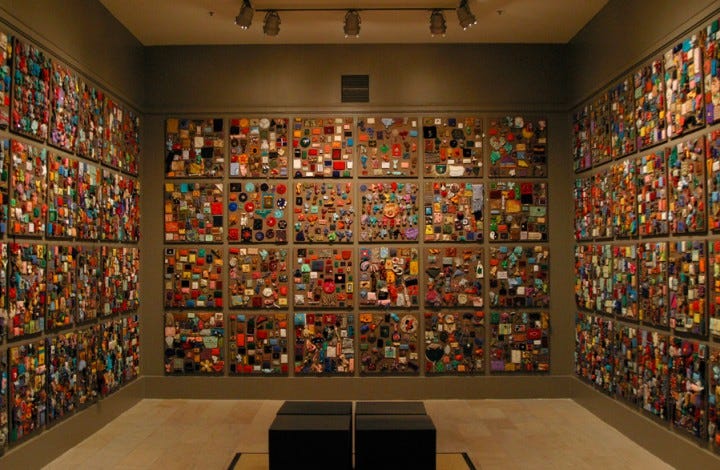
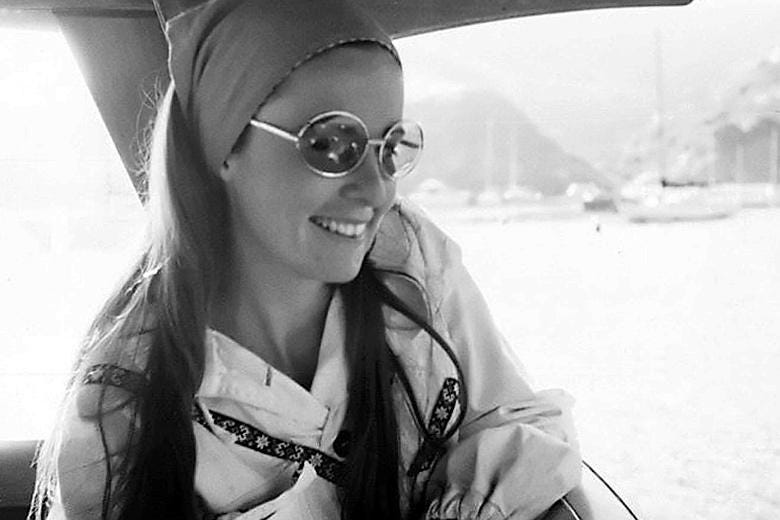
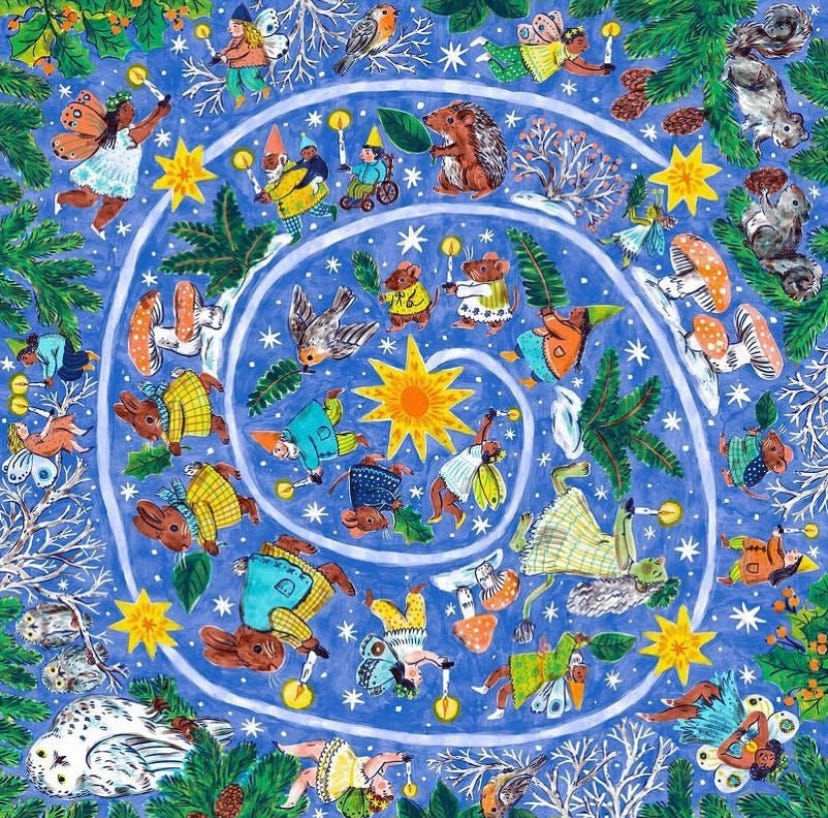
i love this song, it was a favourite for me around 2020. i think you did it great justice + managed to introduced something genuinely new to the sound. Magical work.
bravo!! what an interesting story for such a beautiful song. thanks for the release and bringing back those beautiful lyrics in your style and with your careful and sweet attention.
recommend 2 listen to cover on repeat so you can hear it with new ears in each section :o)